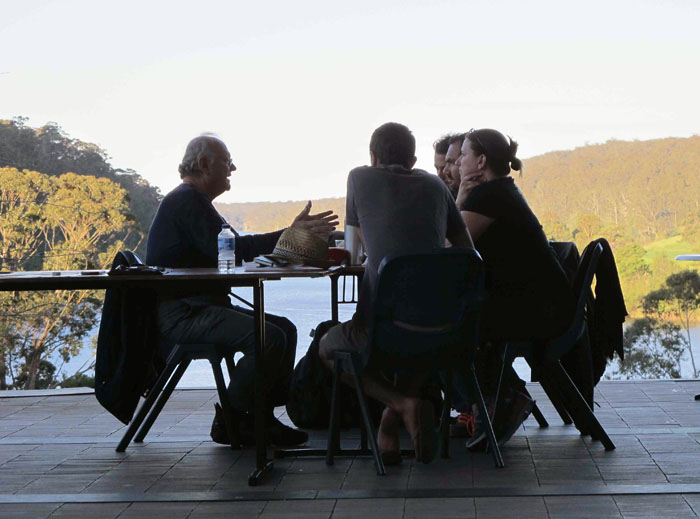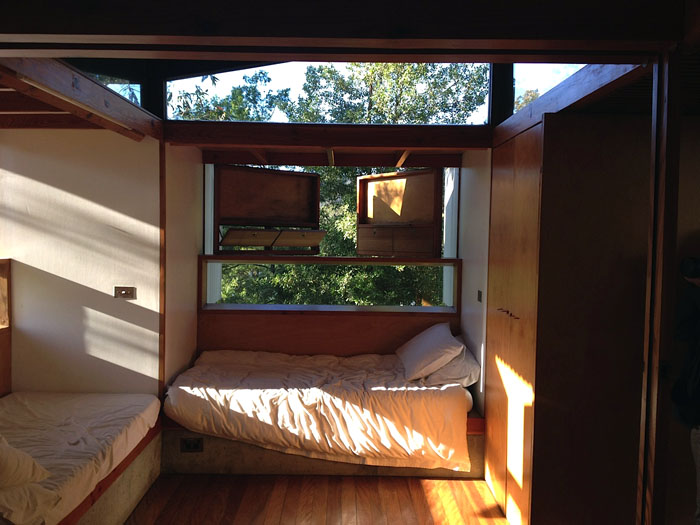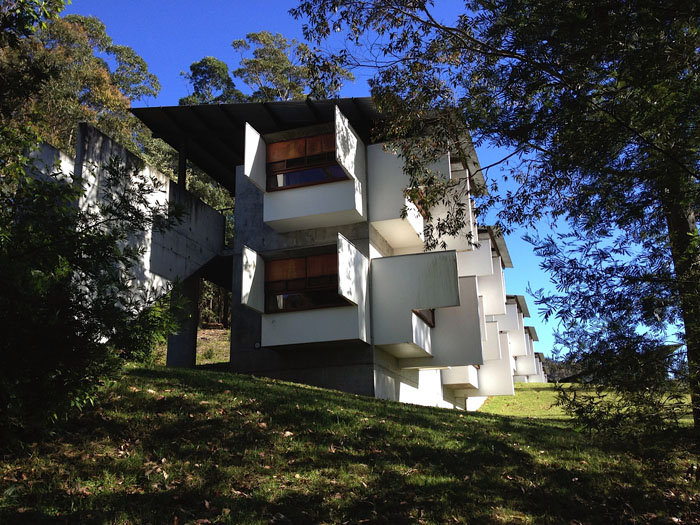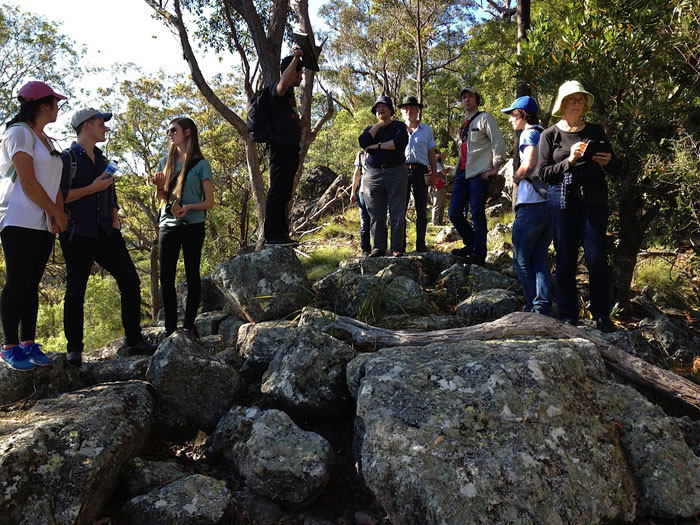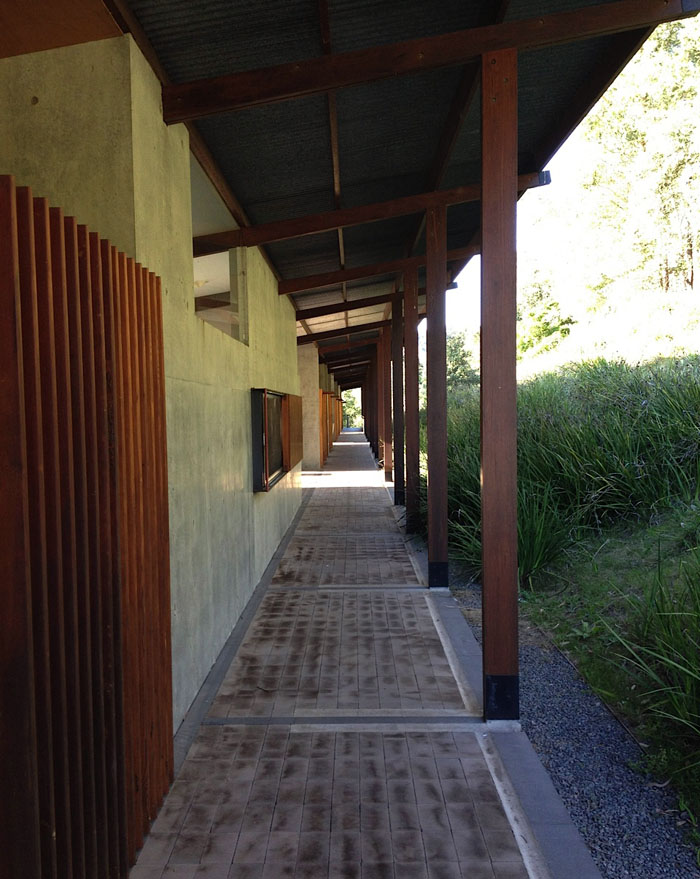By Alison Turner
I recently returned from a once-in-a-lifetime chance to be a participant in the 2013 Glenn Murcutt Master Class in Australia. This was a 14-day experience led by Glenn Murcutt and three other tutors – Peter Stutchbury, Richard Leplastrier and Brit Andresen – that brought 33 people from 17 different countries together to collaborate in teams of four on architectural projects.
We spent the first week at the Arthur and Yvonne Boyd Education Centre at Riversdale on the shore of the Shoalhaven River, which was designed by Glenn Murcutt, Wendy Lewin and Reg Lark. At Riversdale, we had the rare opportunity to work, eat, sleep and socialize in Murcutt’s award-winning building.
The Boyd Centre is part of the Bundanon Trust, a collection of properties gifted to the Australian people by Arthur and Yvonne Boyd, as a place where they hoped others would draw inspiration from the beauty of the natural Australian landscape. Arthur Boyd was one of Australia’s leading artists of the late 20th century, and he had a strong belief, similar to the aboriginal way of thinking, that “one cannot own the landscape.” His own house and studio are located adjacent to the Boyd Centre.
The project we were given was to design a gallery, or series of smaller galleries, to display the artwork of the late Arthur Boyd, which was to be adjacent to Boyd’s home and studio. Much of the first week of the project process was spent trying to understand and analyze the landscape, as it was such an important influence in Boyd’s late work and a huge part of the experience of being at Riversdale. And much was learned from Murcutt and how he responded to the landscape when he designed the Boyd Centre, which, in his words, is a transition from the cultivated landscape and the natural landscape.
Within this transition, Murcutt sets up multiple ways for you to interact with the landscape: immersed into the natural landscape as you move along the corridor at the edge of the bush; at a large scale with framed views of the river and the surrounding hills; smaller framed views; and interactive experiences in the sleeping pods, where you can individually manipulate shutters and vent panels to control the amount of light, air and view. (Although all light and sound could not be blocked entirely, and we quickly realized that waking up at 6 a.m. with the sun and birds was an essential part of the experience of being at Riversdale.)
The Boyd Centre is located about 2½ hours south of Sydney in an area susceptible to high winds (The Westerlies that come out of Antarctica), dangerous bushfires and extremely intense sun. Murcutt took all of this into consideration in the design of the Boyd Centre. It is sited in a position more protected from the threat of fire and uses mostly non-flammable materials. Rainwater is collected and stored for fire protection. Large overhangs, sliding screens and vertical panels, as well as light-colored materials, protect from the intensity of the sun. (I learned quickly why Australian architects wear light-colored clothing and hats.)
The architecture of Murcutt and the other tutors is very connected to the landscape, as are paintings by Arthur Boyd, so being able to understand this place where we found ourselves and learning how to “see” and “feel” the landscape were paramount to the entire experience of the project, but also a central theme to the class.
We had the opportunity to do a few ‘bush walks’ with Glenn and the other tutors. It was during these walks that we learned how different the Australian landscape is to other parts of the world. The Australian landscape is much more harsh, with high winds, fire and sun. You can see it in the vegetation, which is less dense and “translucent.” Vegetation on the west side of the hills is drier and sparser, as this side burns often in bushfires, while the east side is more lush and tropical. You can also see areas affected more by high winds, where the eucalyptus trees are permanently bent to the east. We had a day of “westerlies” when we were there, and it was amazing how intense the wind was and the eerie howling sound it made through the bush, which was deafening when you were walking among the trees.
During the second week, we moved our work and ourselves to Sydney, where we worked in The Muse building at TAFE Sydney Institute. In Sydney, the eight teams really came together to create a very diverse set of proposals for the project. My team was made up of Ayel from Israel, Hector from Mexico, Michael from Belgium and myself. We came up with the idea of mostly imbedding the project into the landscape to create an architectural connection of Boyd’s home and studio to the landscape in which he painted.
During the project process, I was able to be a student again, complete with many passionate discussions with my teammates, lots of sketching and hand drawing, late nights, desk crits, pin-ups and a final review by our tutors, as well as a few guest critics. With such a diverse team working together, we often found ourselves having difficulty communicating, but were always able to come together through drawing, which was another central theme of the class.
All work was done by hand, and Murcutt would constantly remind us that it is through our hands that our ideas are realized, and he often referred to Juhani Pallasmaa’s The Thinking Hand in our conversations.
All in all, it was an amazing experience, and I’ve only shared a piece of it with you in this blog post. I’d love to talk to anyone interested in more details. Please come and find me in my office in Vol Walker.
Alison Turner is a visiting assistant professor of architecture in the Fay Jones School, where she has taught since 2006.
